A common question that I frequently see posted in home inspector forums is about whether or not it’s acceptable to have an electrical panel with no main breaker. This question is typically accompanied by a photo of an electrical panel that looks something like the panel below:
At a glance, you’ll notice that there is no main disconnect. The big red and black wires at the top provide power to the entire panelboard. If this was the main service panel, this would definitely be a problem… but it’s not.
It’s a subpanel
The panel shown above is actually not the main service panel, it’s a subpanel. Any panel wired downstream from the main service panel is a subpanel, and it has to be wired a little bit differently. If you look at the photo above carefully, you’ll notice that the neutral (white) and ground (bare copper) wires never touch each other. On a main panel, more properly known as ‘service equipment’, the grounds and neutrals get connected together. That alone should be enough to tip anyone off that this is a subpanel, not a main.
It’s ok for a subpanel to have a main disconnect, but it’s not required. In this case, the disconnect was located outside of the condo unit. On condo buildings, it’s common for all of the main panels to be located in a single room, usually in the basement of the building.
Sometimes this is in a locked room that we can’t access during the inspection. This isn’t a problem, provided a few requirements are met. Section 230.72(C) of the National Electrical Code (NEC) spells this out under the exception:
On townhouses, it’s not unusual to have a bank of main panels all located right next to each other. We typically need to walk around the entire townhouse building to find this during our inspection.
It’s not typical to have the main disconnect separate from the panel where most of the circuit breakers are located in residential construction, but it does happen. The most common reason for this is an addition. If someone wants to add an addition onto the back of the house where the power comes in from the alley, they’ll typically leave the existing main panel in place in the basement, convert it to a subpanel, and add a main panel somewhere else at the exterior of the home. The photo below shows what this might look like at the exterior when done.
Yes, it’s fine to have the main panel located at the exterior of the home. I’ve had many clients who are shocked at this because it isn’t a typical location for Minnesota homes, but there’s nothing wrong with it.
The rule for main disconnects
Wherever you have a main disconnect, you also have your main service. Every service requires a main disconnect. This disconnect is typically a single circuit breaker, but might also be a fuse block that pulls out. This disconnect need not consist of a single breaker, however. Section 230.71(A) of the NEC allows for up to six main disconnects grouped together or in a common enclosure.
Not once in my entire home inspection career have I come across a service with no main disconnect(s). I’ve come across a handful of homes that had more than six, however, and they were all at houses wired with split-bus panels. I’ll discuss split-bus panels next week.

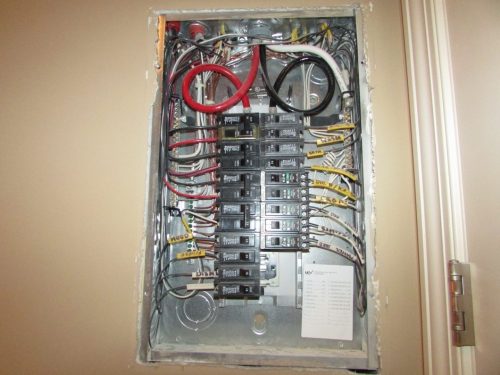
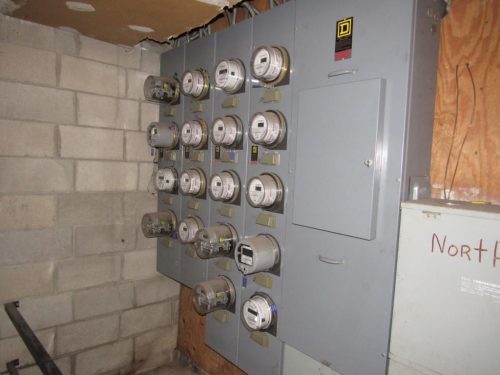
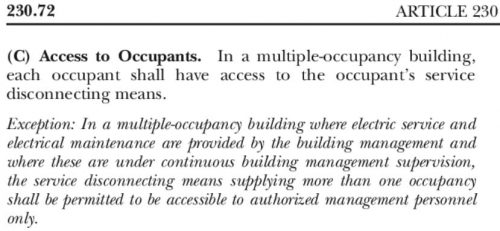
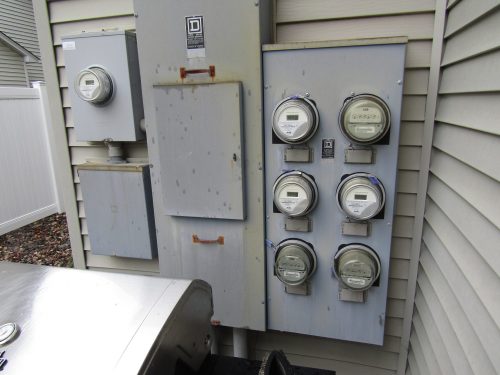
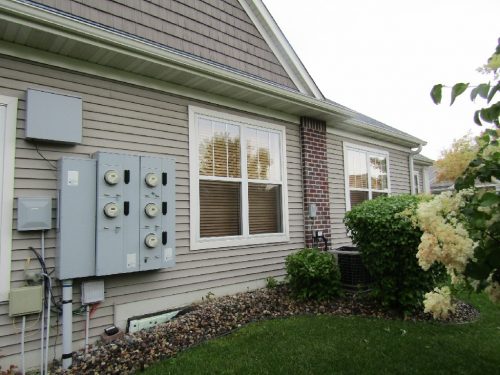
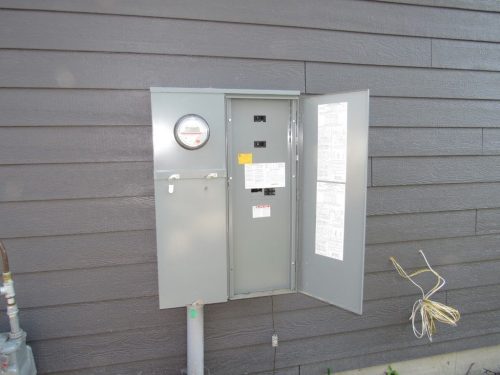

Lora
August 25, 2019, 5:39 pm
This is a nice informative site. I appreciate your responses. My problem the house I’m renting was built in 1948 and the whole house is not grounded. I’ve switched out some of the plugs to avoide the cumbersome adapters. How can I ground the whole house? It isn’t possible for me to rewire it.
Reuben Saltzman
August 26, 2019, 4:12 am
Hi Lora, it’s extremely unlikely that your entire house is not grounded; rather, you probably have a whole bunch of ungrounded outlets. Check out this post for information about ungrounded outlets: https://structuretech.bizzyprojects.com/options-for-repairing-ungrounded-three-prong-outlets/.